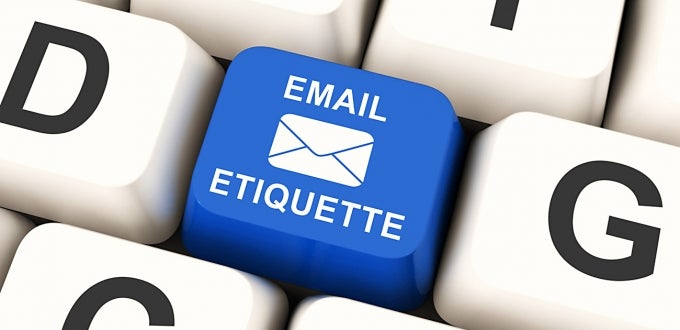You are here
Email Etiquette 101: Ensure Your Emails Are Read

Let’s be real — emailing professors or colleagues can feel like throwing a paper airplane into an abyss. Crafting a clear, professional, and respectful email can help ensure that people read and respond to your messages, while poor email etiquette can negatively impact relationships with colleagues and clients according to a study by the Journal of Business and Technical Communication. Fear not! Here’s a crash course on how to master the art of email etiquette.
1. Start with a Friendly Greeting
Every email should start with a greeting. It doesn’t have to be overly formal; a simple “Hello Professor Smith” or “Hi there, Jen” will do the trick. But it’s rude to jump right into asking for something or getting down to business without at least saying hello! And don’t forget to wrap it up with a polite “Thank you” at the end. It’s a small touch, but it shows you’re respectful and appreciative.
2. Context Is King
Professors and colleagues are busy people, and they interact with tons of students and coworkers every day. Make it easy for them to place you by providing some context. If you’re emailing a professor, mention the course and section you’re in (e.g., “I’m in your MWF Bio 101 course, section 2300”). For colleagues, if you don’t interact with them frequently, a quick reminder of how you met them or who you are can make all the difference.
3. Proofread Like Your Grade Depends on It
Nothing kills your credibility faster than a typo-riddled email. For a business, academic, or formal email, take a minute to proofread and spell-check your message before hitting send. And don’t forget capital letters and punctuation. It’s all about keeping things professional, and a well-proofed email shows you care about the details.
4. No Rush — Timing Is Everything
Whether you’re asking for feedback on a draft or requesting a letter of recommendation, give the recipient plenty of time to respond and a clear timeframe for when you need the response. Professors and colleagues are juggling multiple responsibilities, and the more time you give them, the more likely they are to help you out. Ideally, send your request at least a week in advance. The longer a task will take, the further in advance you should send the ask. Reviewing a thesis or writing a letter of recommendation for a doctoral program takes more time than forwarding a contact’s information. If you are sending an urgent request, acknowledge and apologize for the short timeframe.
5. Be Mindful of the Clock
The timing of your email matters just as much as the content. Aim to send your emails during regular work hours: Monday through Friday, 8:30 A.M. to 5 P.M. If you’re working late or over the weekend, use Outlook’s Schedule Send feature to ensure your email lands in their inbox at the right time. (You can also schedule an email in Gmail or Apple Mail.) No one wants their important message buried under a mountain of overnight junk mail, nor do you want to disturb the recipient with notifications in the middle of the night.
6. Watch That “Reply All” Button
We’ve all been there — accidentally clicking “Reply All” when we meant to reply just to the sender or select people in the email. Be mindful of this, especially when the email thread involves sensitive or confidential information. Also consider weeding out recipients if there are people who don’t need to be in the loop for a detailed discussion or you’ll be including any criticism or complaint. Reply All has been the cause of way too many data breaches and awkward moments, so double-check before you hit send!
7. Sign Off in Style
An email signature with your credentials (first and last name, major/graduation year or position/department, and your contact information) is a must. It not only looks professional but also makes it easy for the recipient to contact you if needed. Plus, it adds that extra touch of polish to your message. You can create multiple email signatures in Outlook for different roles, such as a member of Staff/Student Council or a committee vs your job or student status.
8. Short and Sweet Wins the Race
Keep your emails concise and to the point. Include all relevant details, but don’t overload the recipient with unnecessary information. A well-edited email is considerate of their time and increases the chances of getting a prompt response. Keep the ask at the top of the email, and use attachments for more complete background information.
9. Use Your Pitt Account for Pitt Business
Always send emails from your Pitt account for work or academic purposes. If a recipient sees an unfamiliar and generic Gmail address, they might skip right over it or, worse, think it’s spam. Stick to your Pitt account to ensure your emails are recognized and trusted.
Happy Emailing, Panthers!
Following these tips will help you craft emails that are clear, professional, and effective. Whether you’re reaching out to a professor, colleague, or anyone in between, mastering email etiquette is a key skill that will serve you well during your time at Pitt and beyond.
-- By Haree Lim, Pitt IT Student Blogger